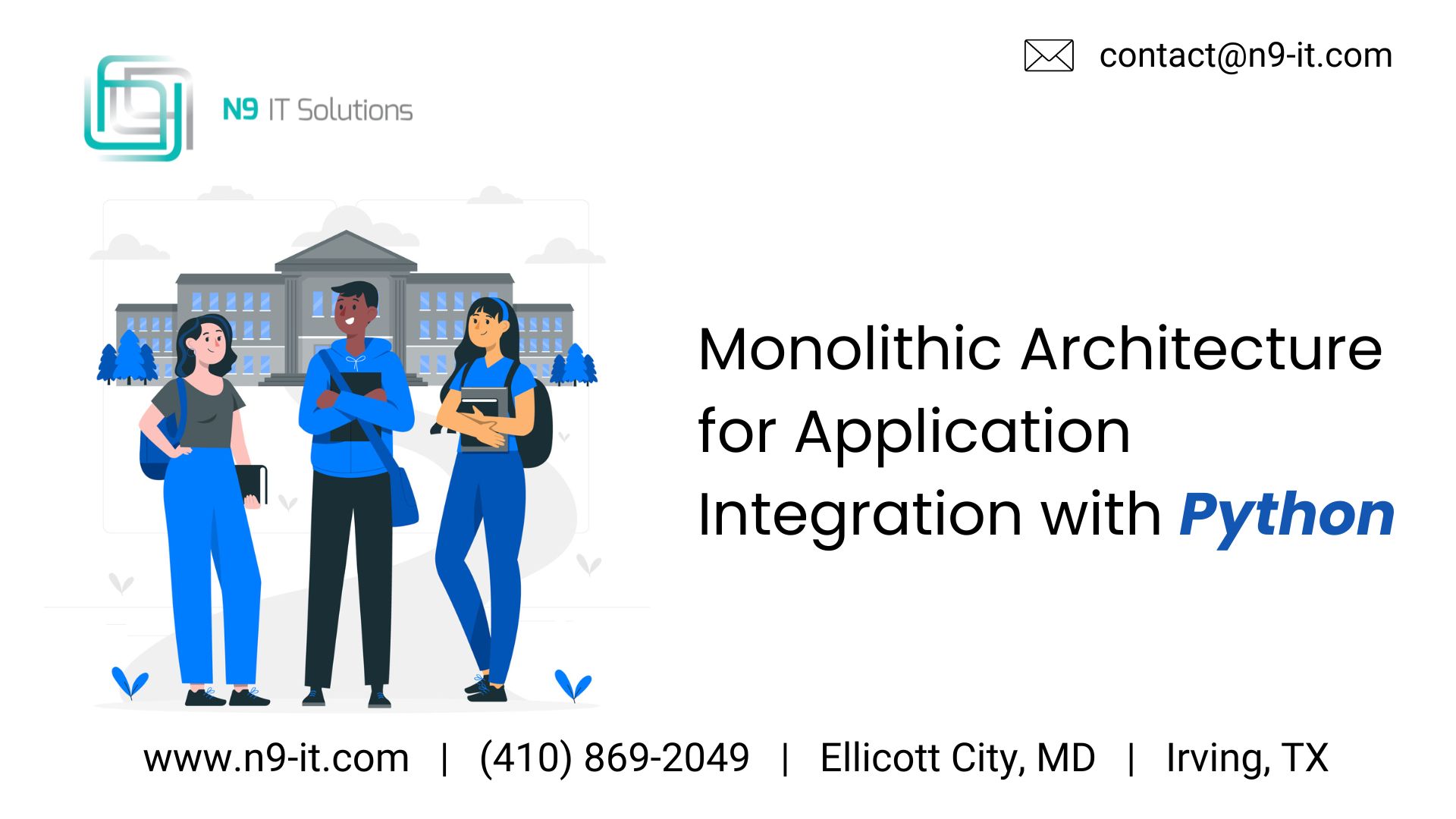Monolithic Architecture for Application Integration with Python
Introduction
Developers use monolithic architecture as a traditional approach for building applications where they combine all the modules of an application into a single executable file or package. Enterprises still use this approach widely because it provides a simple and easy-to-manage structure that can be easily deployed on-premises or on the cloud.
Differences between the Microservices and Monolithic Architecture
In this technical documentation, we will discuss the monolithic architecture approach for building applications using Java and Python programming languages. We will cover the benefits, challenges, and best practices for implementing this architecture in your application development process.
Benefits of Monolithic Architecture
There are several benefits offered by the monolithic architecture approach, including:
- Simple Design: Monolithic architecture simplifies the structure and makes it easy to develop, test, and deploy. It also helps to avoid the complexity of designing and maintaining a distributed system.
- Easy to Deploy: Monolithic architecture eases the deployment of an application on-premises or in the cloud. It provides a single executable file or package that can be deployed quickly without any complex configuration.
- Easy to Test: The architecture integrates all the modules into a single package, simplifying the testing process. This enables testers to test the application and quickly identify and fix issues.
- Easy to Scale: Monolithic architecture enables scaling an application horizontally by adding more instances of the same package to handle increased traffic.
Challenges of Monolithic Architecture
This approach of monolithic architecture also presents some challenges, including:
- Limited Flexibility: Monolithic architecture makes it difficult to add or remove features as all the modules are tightly coupled, limiting the flexibility of an application.
- Scalability Issues: Scaling a monolithic architecture application can become challenging as the entire package needs to be scaled together, even if only a few modules are experiencing high traffic as the application grows and traffic increases.
- Dependency Management: Managing dependencies in a monolithic architecture application can pose a challenge, as all the modules share the same dependencies, making management and updating difficult.
Best Practices for Implementing Monolithic Architecture
Implement the following best practices to consider a monolithic architecture for your application development process.
- Modularize the Application: Although all the modules are integrated into a single package, it is important to modularize the application by separating different modules into their sub-packages.
- Use an Appropriate Framework: Choose a framework that supports monolithic architecture, such as Spring for Java and Flask for Python.
- Use a Version Control System: You should implement a version control system to manage changes to the application codebase and keep track of changes over time.
- Use a Continuous Integration and Deployment Tool: Automate the build and deployment process by implementing a continuous integration and deployment (CI/CD) tool to make deploying updates and changes to the application easier.
- Implement Load Balancing: It will distribute traffic across multiple instances of the same application package, making it easier to scale the application horizontally.
Example of Monolithic Architecture in Python:
Here is an example of how to implement a monolithic architecture in Python using the Flask framework:
from flask import Flask, jsonify
app = Flask(__name__)
@app.route('/api/hello')
def hello():
return jsonify({'message': 'Hello, World!'})
if __name__ == '__main__':
app.run()
This example shows a single Flask application with a REST endpoint at /api/hello. This endpoint returns "Hello, World!" in JSON format.
Conclusion
You can successfully implement a monolithic architecture for your application development process. Monolithic architecture is a simple and easy-to-understand approach to building applications using Java and Python programming languages. The architecture offers several benefits, including a simple design, easy deployment, testing, and scalability. However, the approach has challenges, including limited flexibility, scalability issues, and dependency management.
Scope @ N9 IT Solutions:
- N9 IT Solutions is a leading IT development and consulting firm providing a broad array of customized solutions to clients throughout the United States.
- It got established primarily with an aim to provide consulting and IT services in today’s dynamic environment.
- N9 IT also offers consulting services in many emerging areas like Java/J2ee, Cloud Computing, Database Solutions, DevOps, ERP, Mobility, Big Data, Application Development, Infrastructure Managed Services, Quality Assurance and Testing.

